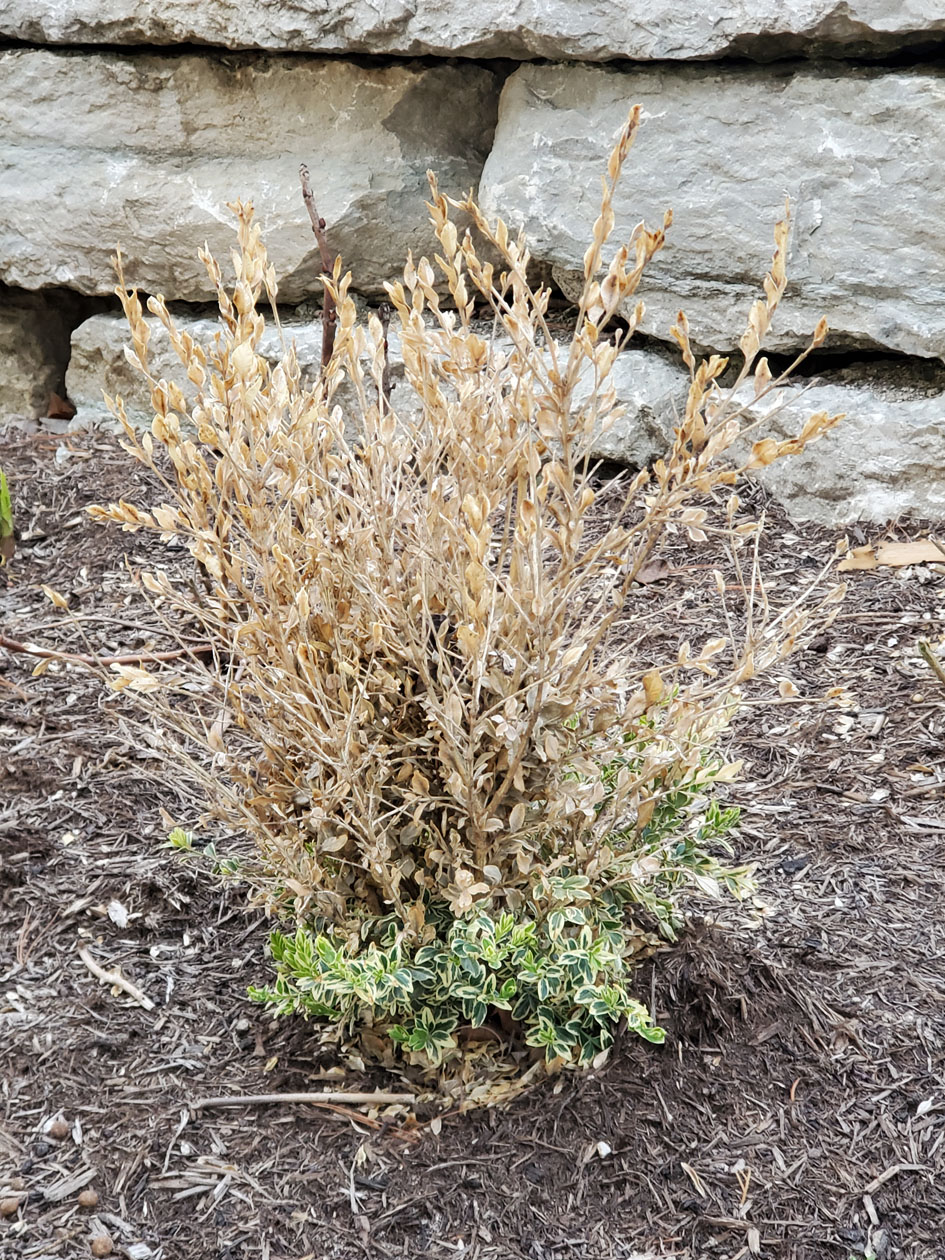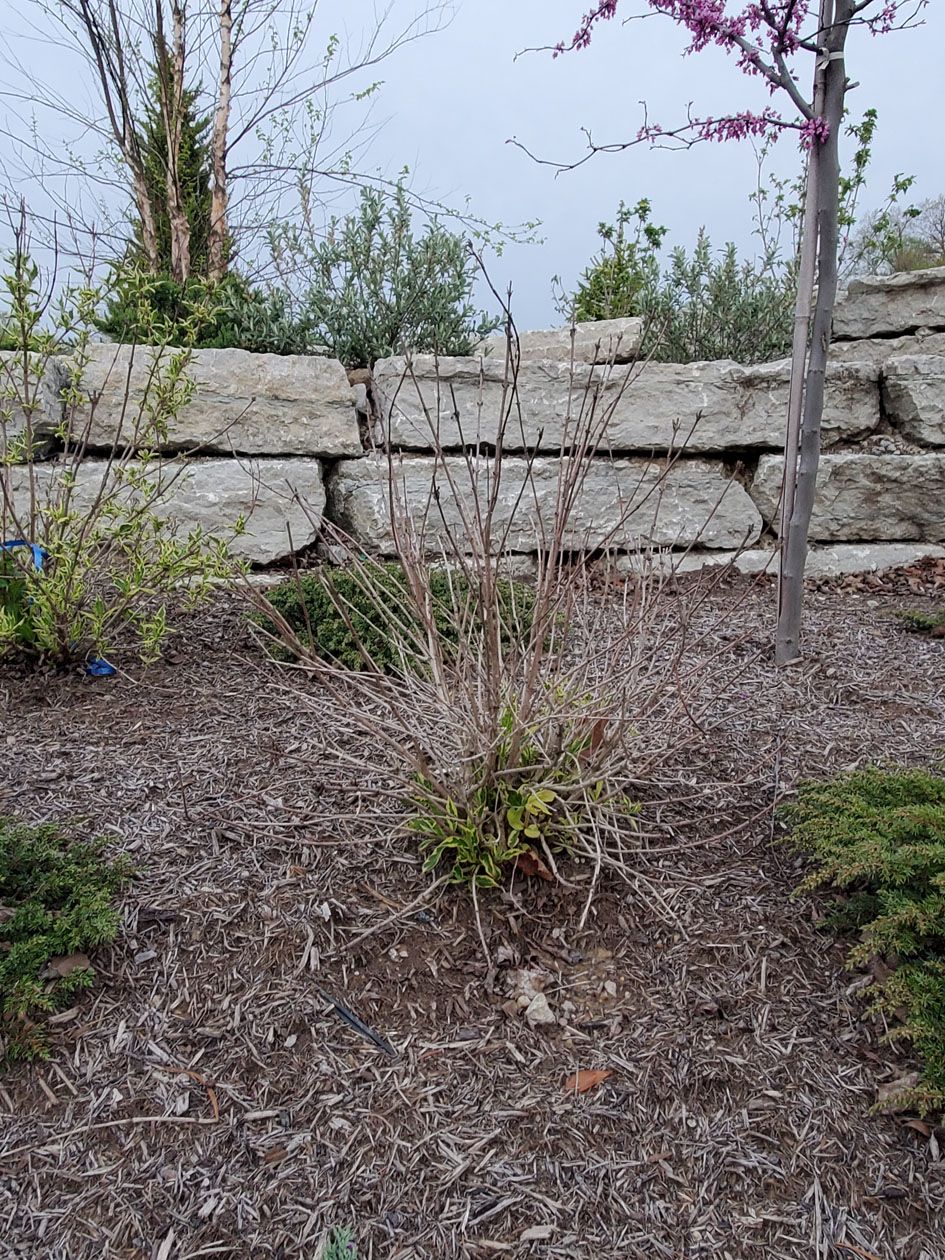Seeing some winter damage?
You’re not alone.
Confused about a shrub that’s dead at the top this spring? Does it look normal up a few inches from the ground then look brown or have no leaves? You’re not alone. One of the most common things we are seeing this year are dead tops. It was not caused by the latest of a long line of invasive pests or diseases, but by Santa Claus. Well, sort of. Remember that polar vortex right around Christmas with extremely low temperatures and blistering wind that made it painful to be outside? Well, your plant does too. Those winter winds pushed the cells inside many evergreen’s leaves past their breaking point. Those ruptured cells have no way of recovering throughout the winter and so we’re left with dead tops this spring. But what about the healthy-looking foliage at the bottom? Well, the height of the healthy-looking tissue corresponds directly with how much snow we had on the ground before things got really bad. 3″ of snow = 3″ of healthy-looking foliage. The snow provides thermal insulation as well as a barrier to the winter winds. And thanks to that snow, many fragile root systems were spared from freezing past their recovery point. This winter’s events affected broad leaved evergreens the most- holly, boxwood, abelia, euonymus, among others because they have so much exposure in winter. Instead of having low water content resin in their “veins” like a conifer or going dormant like a deciduous shrub. Many years broad leafed evergreens get the most from straddling the two classifications. This winter, they just got a tough lesson.
So what do I do about it. Well, the shrub is technically alive. So with a good trimming, many shrubs will go on to live full healthy lives. Some shrubs are just too badly damaged to look right for a long time. So use your discretion. Before you bring your shrub in for replacement, just recall that this damage has nothing to do with the quality of the plant nor the establishment you purchased it from. So use a little common sense and a touch of patience when deciding your shrubs fate. And when in doubt, just send us a pic Online Support Form. And in the case of a rough looking boxwood, take a good close look. The cause might be another big story this spring… The Boxwood leafminer. Article



